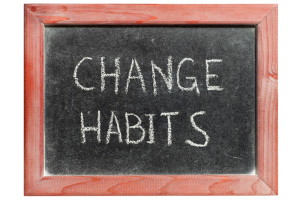Speech Tips
Pauses In A Presentation, Part Two
Three Most Commonly Mispronounced English Sounds for Spanish Speakers
Three Most Commonly Mispronounced English Sounds for Spanish Speakers
 Nearly 20% of Americans speak a different language at home. About 47% of the foreign-born population are Hispanic. The Latino population has doubled since 1990. Florida is home to the third-highest total of Latinos, or 22.8 percent of the state’s population. California and Texas are home to even larger totals of Latinos at 38.1 percent Latino.
Nearly 20% of Americans speak a different language at home. About 47% of the foreign-born population are Hispanic. The Latino population has doubled since 1990. Florida is home to the third-highest total of Latinos, or 22.8 percent of the state’s population. California and Texas are home to even larger totals of Latinos at 38.1 percent Latino.
Our Spanish-as-a-first-language students in Florida and California, and Canada and Australia hold management positions (especially for restaurants). They are also teachers or professors, and they are entrepreneurs. Two of our students have won “manager of the year” for a large restaurant chain in Florida.
When I was in Miami, a human resource administrator stopped me in the hall to praise Carlos. “What an amazing change, “she said. “It used to be he wouldn’t talk at all. Now he stops me to do friendly talk. Getting to speaking clear English has given him amazing confidence.”
Life change. That’s exactly it. When you know you have the clear English speaking skill, then your confidence soars, and life, career and relationships blossom.
There is not one Spanish but many Spanishes. Countries and regions of countries have particular speech sound differences. For example, many people from Cuba have a “w” sound which is preceded by a “g” sound. So the “w” sounds like a “gw.” (Tip: Because Spanish as a first language people can have very different speech sounds, that makes it so wise to do a good assessment on speech sounds and word intelligibility. That way you know what your errors are so you can work directly on them. That makes for efficient learning!)
What are three of the most frequent errors for Spanish as a first language? By numbers, the most frequent errors are the short vowel “a”, “d”, “z.” Also many people pronounce these sounds inaccurately: “j”, “ch”, and short vowel “i.”
Be sure to watch our English Speech Tips videos and Accent Reduction Tip videos for more English pronunciation and accent reduction exercise.
Check out our advanced weekly speech tip program, our new subscription called ClearTalk Weekly, www.subscription.cleartalkmastery.com
Rerun from July 17, 2013 and again from Sep 14, 2016.
Pauses In A Presentation, Part One
Pauses In A Presentation, Part One
If you are an ESLer, your audience welcomes pauses in a presentation. If it is a lengthy pause of more than two seconds, smile at them, so they won’t think you forgot what to say next.
American Accent Training: What does it take to make a habit?
American Accent Training: What does it take to make a habit?
How do you form a habit?
Neuroscientists tell us it takes doing a new pattern a thousand times before we make a neural trace in our brains.
Neuroscientists tell us it takes 70 days of practice every day to change a habit. They say it takes 10,000 times of practice before a pattern is a habit.
The pattern needs to be accurate! Most efficient learning comes with systematic perfect practice. That is the bedrock and foundation of the best of training programs.
I am so impressed with the leadership training of the Good Leaders, Good Shepherds program. They understand the nature of change into a habit. Their mission is to foster the development of good leaders for the Catholic clergy. Their training program extends over two years.
Their overall goal is leadership to create and build authentic, vibrant Catholic communities.
What I love is the concept of “authentic.” It means to be worthy of trust, reliance or belief.
Clear communication – that is what we humans strive for. We simply want to grow in that wonderful skill. Focus on authenticity. Focus on building trust, human being to human being.
Focus on taking every opportunity to build your habit of clear communication – in speech sounds, words, conversation, presentations. Build authentic communication. Trust and faith. Can’t get too much of that.
Be sure to watch our English Speech Tips videos and Accent Reduction Tip videos for more English pronunciation and accent reduction exercise.
Check out our advanced weekly speech tip program, our new subscription called ClearTalk Weekly, www.subscription.cleartalkmastery.com
Rerun from June of 2013 and from Sep 7, 2016
A Powerful Point of View for Presentations
Remember this:








